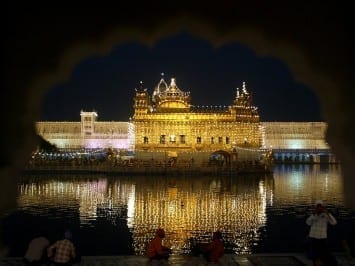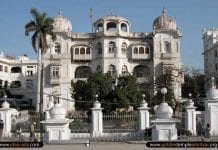


NEW YORK, USA—A tech magazine based in in NYC, USA, has published a list of must see architecture in the world. The list of 23 sites highlighted includes Darbar Sahib, Amritsar, as one of the must see locations in a person’s lifetime.
Highlighting the view of Darbar Sahib at night, the magazine has picked locations due to the artistic expression and appeal. “Structures that push the boundaries of structural expression”, they write, before listing numerous other sites around the world will inspire readers to visit.
Darbar Sahib, constructed by the 5th Nanak, Guru Arjan Dev Ji, began in 1588.
Some of the architectural features of the Harmandir Sahib were intended to be symbolic of the Sikh world view. Instead of the normal custom of building a Gurdwara on high land, it was built at a lower level than the surrounding land so that devotees would have to go down steps to enter it. In addition, instead of one entrance, Sri Harmandir Sahib has four entrances.
The Gurdwara is surrounded by the Sarovar, a large lake or holy tank, which consists of Amrit (“holy water” or “immortal nectar”). There are four entrances to the gurdwara, signifying the importance of acceptance and openness. There are three holy trees (ber), each signifying a historical event or Sikh saint. Inside the gurdwara there are many memorial plaques that commemorate past Sikh historical events, saints and martyrs, including commemorative inscriptions of all the Sikh soldiers who died fighting in World War I and World War II.
Much of the present decorative gilding and marblework dates from the early 19th century. All the gold and exquisite marble work were conducted under the patronage of Hukam Singh Chimni and Emperor Ranjit Singh, Maharaja of the Sikh Empire of the Punjab. The Darshani Deorhi Arch stands at the beginning of the causeway to the Harmandir Sahib; it is 62 metres (203 ft) high and 6 metres (20 ft) in width. The gold plating on the Harmandir Sahib was begun by Ranjit Singh and was finished in 1830. Maharaja Ranjit Singh was a major donor of wealth and materials for the shrine.




